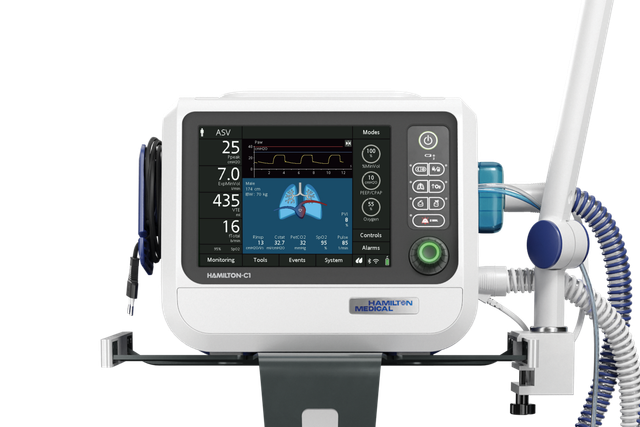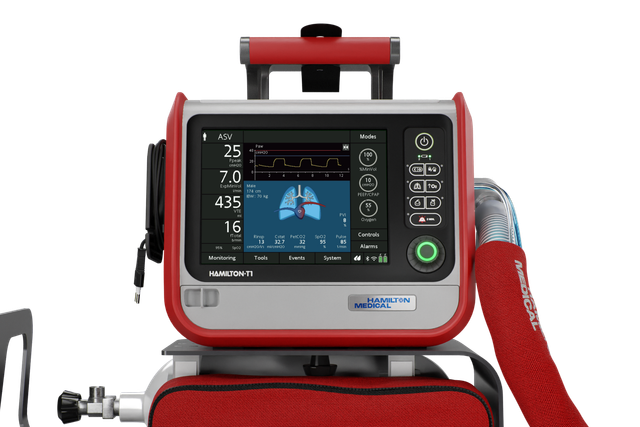Fußnoten
- A. Nicht für alle Märkte verfügbar.
- B. Mit Ausnahme von CPR und INTELLiVENT®-ASV®.
Referenzen
- 1. Roca O, Caritg O, Santafé M, et al. Closed-loop oxygen control improves oxygen therapy in acute hypoxemic respiratory failure patients under high flow nasal oxygen: a randomized cross-over study (the HILOOP study). Crit Care. 2022;26(1):108. Published 2022 Apr 14. doi:10.1186/s13054-022-03970-w
- 2. Atakul G, Ceylan G, Sandal O, et al. Closed-loop oxygen usage during invasive mechanical ventilation of pediatric patients (CLOUDIMPP): a randomized controlled cross-over study. Front Med (Lausanne). 2024;11:1426969. Published 2024 Sep 10. doi:10.3389/fmed.2024.1426969
- 3. Sandal O, Ceylan G, Topal S, et al. Closed-loop oxygen control improves oxygenation in pediatric patients under high-flow nasal oxygen-A randomized crossover study. Front Med (Lausanne). 2022;9:1046902. Published 2022 Nov 16. doi:10.3389/fmed.2022.1046902
- 4. Soydan E, Ceylan G, Topal S, et al. Automated closed-loop FiO2 titration increases the percentage of time spent in optimal zones of oxygen saturation in pediatric patients-A randomized crossover clinical trial. Front Med (Lausanne). 2022;9:969218. Published 2022 Aug 25. doi:10.3389/fmed.2022.969218
- 5. Mól CG, Vieira AGDS, Garcia BMSP, et al. Closed-loop oxygen control for critically ill patients--A systematic review and meta-analysis. PLoS One. 2024;19(6):e0304745. Published 2024 Jun 12. doi:10.1371/journal.pone.0304745
- 6. Trottier M, Bouchard PA, L'Her E, Lellouche F. Automated Oxygen Titration During CPAP and Noninvasive Ventilation in Healthy Subjects With Induced Hypoxemia. Respir Care. 2023;68(11):1553-1560. doi:10.4187/respcare.09866
- 7. Erickson EN, Bhakta RT, Tristram D, Mendez MD. Pediatric Bronchiolitis. In: StatPearls. Treasure Island (FL): StatPearls Publishing; January 12, 2025.














